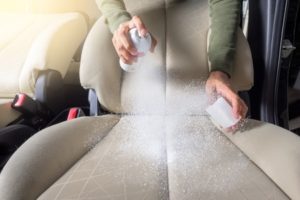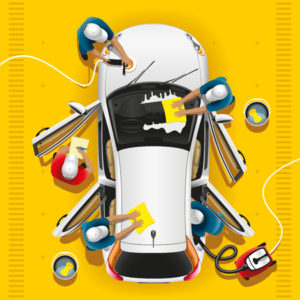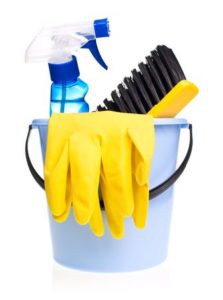So, your car experienced flood damage but wasn’t considered a total loss. You might be wondering how to clean out your vehicle to help get it back on the road as quickly as possible. Here are 10 steps to clean a flood-damaged car.
Can Flood-Damaged Cars be Repaired?
Before you grab your cleaning supplies, you might be wondering: can flood-damaged cars be repaired? This is an excellent question! It depends entirely on the extent of the flood damage that has occurred to your car, as well as how much money you are willing to invest in repairs.
Whether or not a flood-damaged car can be repaired depends on a few factors, including:
- Whether the vehicle was considered a total loss
- Type of water which affected the vehicle
- The extent of damage and corrosion to the vehicle
- The components that will require replacement
- Whether or not the engine is hydrolocked
In theory, you can restore any car that has been flood-damaged if you’re willing to replace every component that was affected. The number of components that need replacement will vary depending on whether the water only rose to the floorboards, all the way to the dashboard, or if the entire car was submerged.
The relative worth and value of repairing a flood-damaged car will be different for everyone. For most people, a replacement vehicle is the most cost-effective option. However, some people may have vehicles that have nostalgia or other significance – vintage or classic cars, for example – so restoration regardless of cost may be the preferred option.
10 Tips to Clean a Flood-Damaged Car
These 10 tips to clean a flood-damaged car will help you dry your car as quickly as possible following water incursion.
- Remove everything from the vehicle.
 The first step to clean the interior of your car is to remove everything from the vehicle – and we do mean everything from the glove compartment to the trunk.
The first step to clean the interior of your car is to remove everything from the vehicle – and we do mean everything from the glove compartment to the trunk.
Pull out the removable carpets as well as the carpets which usually remain fixed to the bottom of the vehicle and let these dry in a sunny area. Ideally, you can use a shop vac to help speed the process. If you have a car with removable seats, take them out and let the seats dry out in the garage or in the sun.
- Disconnect all electrical connections
Unplug and remove the battery from the car, and remove fuses and other electrical connections if these components were affected by water damage.
- Air out the vehicle.
Roll down every window and open the doors. It’s best if you can leave your car in an open space such as a garage overnight to help speed along the process. If you don’t have a garage, then consider putting up a tarp overnight to keep out the rain.
- Keep air circulating.
 Set up a box fan, standing fan, floor fan, or all three to keep air moving through your vehicle. Ideally, you’ll want to keep the air flowing in one direction – in one door and out the other – to remove humidity from the cabin as quickly as possible.
Set up a box fan, standing fan, floor fan, or all three to keep air moving through your vehicle. Ideally, you’ll want to keep the air flowing in one direction – in one door and out the other – to remove humidity from the cabin as quickly as possible.
- Get silica gel – and lots of it.
Silica gel is great for absorbing excess moisture from the air. Grab some from your local hardware shop and let this handy substance do some moisture removal for you.
- Flush the fluids inside the vehicle.
If you’re able to do so, and if the components were affected by water damage, then consider removing and replacing the fluids inside your vehicle. These might include the coolant, oil, windshield washer fluid reservoir, and transmission fluids.
- Clean your flood-damaged car carpets separately.
Flood-damaged car carpets can be tricky to clean because not only do mold and mildew start growing within hours of water exposure, they hold onto odors. By removing the carpets from the vehicle, you’ll be better equipped to get them dry and aired out as quickly as possible.
- Deodorize your vehicle using charcoal briquettes and baking soda, and let it air out as much as possible.
A bowl of charcoal briquettes and a box of baking soda will go a long way towards not only removing excess moisture from your vehicle, but also deodorizing the space. Replace these items once a day – or more as needed – until the moisture is gone and the car smells normal again.
- Use heavy-duty cleaning agents.
 Professional grade heavy-duty cleaning agents will save you time and hassle because they are designed with difficult jobs in mind. They may cost a little more in the moment, but they’ll save you a headache later!
Professional grade heavy-duty cleaning agents will save you time and hassle because they are designed with difficult jobs in mind. They may cost a little more in the moment, but they’ll save you a headache later!
- Start cleaning and drying your car as soon as possible.
Time is of the essence when it comes to dealing with water damage in cars. By following the 10 steps to clean a flood-damaged car listed above, you’ll be in a good place to prevent your car from developing strange odors or long-term damage.










Leave a Reply
You must be logged in to post a comment.